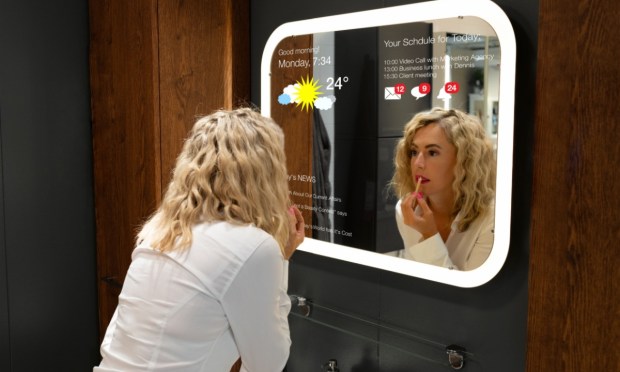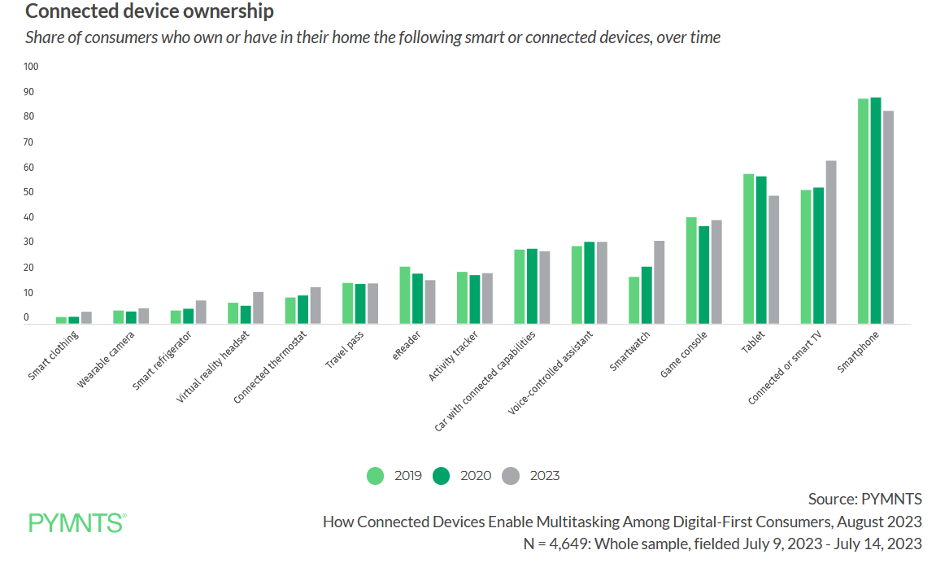
As PYMNTS recently reported, it may not be long before today’s self-guided household vacuum cleaners are replaced by advanced, AI-driven robots that make Roombas look like whisk brooms.
This is just one example of how the next wave of technology might begin transforming our lives while we’re still adapting to the last one.
Right now, homeowners could bring their bathrooms into the 21st century by investing $8,600 in a smart toilet from Kohler that comes complete with ambient lighting, a built-in speaker system, a heated seat and more.
Or they could wait a few years and transform their bathrooms into facilities that have more in common with laboratories than lavatories. According to The Wall Street Journal (WSJ), in the not-too-distant future, people will be able to walk into their bathrooms and test their saliva for COVID-19 while brushing their teeth, let their commodes analyze their urine for signs of kidney issues and evaluate the quality of their skincare regime while they apply their makeup.
In a few years, traditional bathrooms could be replaced by smart, digitally-connected labs that turn mundane morning routines into advanced healthcare audits.
Although the WSJ makes it clear that most of these advanced features are still years away, PYMNTS intelligence’s data suggests that — once they are available — many U.S. consumers will likely embrace them as part of their daily, digital routines.
As we reported in a recent edition of our How We Will Pay report, “Multitasking Consumers Want to Shop — and Work — at the Same Time,” digital-first consumers already deploy their connected devices and apps to multitask their way through their days.
The report found 85% of consumers are already highly connected, and they leverage this connectivity to juggle a wide variety of daily tasks. Fifty-two percent said they use connected devices while eating breakfast; 68% do so while commuting; and 67% use them while taking care of others.
So, is it that much of a stretch to imagine them scanning for health issues while going through their morning routine?
This love of multitasking is already reshaping the workday, with 38% of working consumers saying they use their devices for leisure or entertainment purposes while on the job. In fact, 27% say they use their devices to buy groceries or retail items while working.
Leisure time is also transforming. Many consumers report multitasking when they should be kicking back. Two-thirds of consumers say they digitally juggle a variety of activities during their down time. And, just as some workers admitted to leveraging connectivity for non-work-related activities while they are on the clock, 15% of respondents said they check in with work digitally during their free time.

The most popular device remains the smartphone, which 85% of U.S. consumers now carry. This share is down slightly from a 2020 peak of 90%, suggesting perhaps some degree of market saturation. The popularity of tablets also dipped to 51%, down from 60% in 2019.
Meanwhile, other types of connected devices have only gained traction. The popularity of smart TVs jumped to 70% in 2023, a 16% increase over 2020. A third of consumers now wear smartwatches, up from 19% in 2019. Other devices following similar trajectories include wearable cameras, smart refrigerators, VR headsets, connected thermostats and voice-controlled assistants. The popularity of gaming consoles dipped to 39% in 2020 but rebounded to 41% last year.
As “How We Will Pay” reveals, affluent consumers are 20% more likely to own connected devices than their middle-income or low-income peers. With that in mind, it’s no surprise that the WSJ predicted the smartest of smart-bathroom features will only make appearances in “high-end U.S. homes” — at least initially.
The rest of us may have to wait a little longer, but given how health conscious many of us are in today’s post-pandemic environment, the appeal of a smart bathroom could win over a high percentage of consumers, regardless of income.